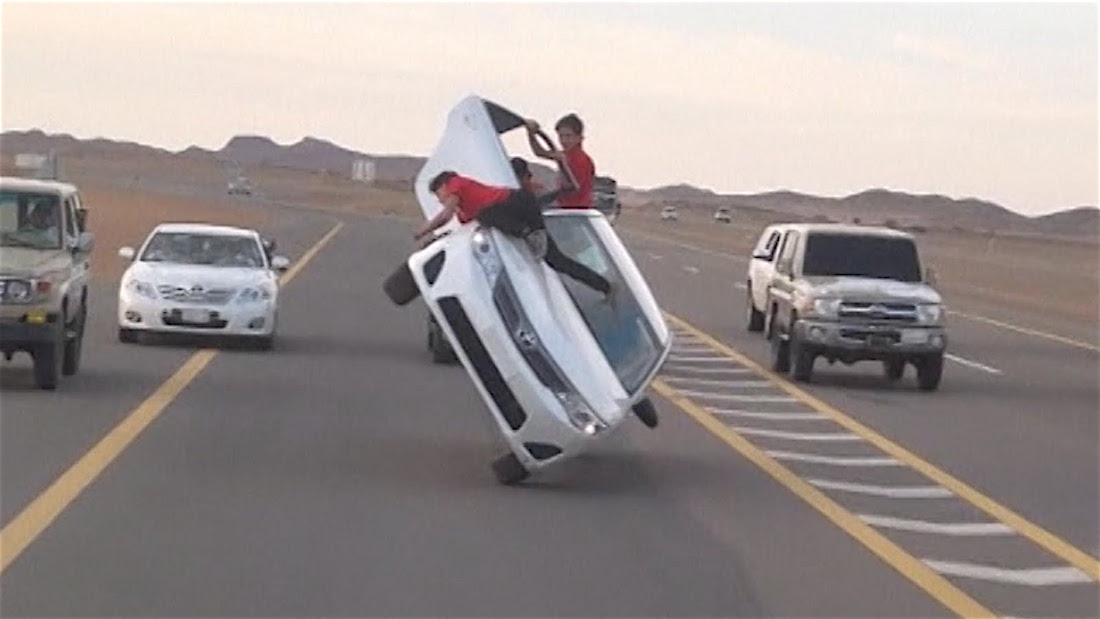Every year in Saudi Arabia, misery visits households across the land as the lives of approximately 7000 people are cut short as a result of traffic accidents. Some 39,000 more people suffer non-fatal injuries, with many incurring a disability as a result of their injury, according to an official of the Traffic Safety Committee in Saudi’s Eastern province who added that the figure of 29 deaths per every 100,000 motorists put Saudi Arabia high on the list globally.
This was disclosed during a workshop organized by the Eastern Province Chamber of Commerce and Industry. The official also added “the committee conducted a study which revealed that the volume of the economic losses resulting from traffic accidents stands at three billion Saudi Riyals annually.”
Now it doesn’t take a rocket scientist to determine that road traffic injuries cause considerable emotional and economic pain to victims, their families, and to nations as a whole. These losses arise from the bereavement of the dead, the expenses of treatment which include rehabilitation and incident investigation as well as reduced or lost productivity in wages for those killed or disabled by their injuries, and for working family members who have to take time off work to care for their injured family members.
The May 2016 figures released by the World Health Organization (WHO) state that:
About 1.25 million people die each year as a result of road traffic crashes.
Road traffic injuries are the leading cause of death among young people, aged 15–29 years.
90% of the world’s fatalities on the roads occur in low- and middle-income countries, even though these countries have approximately half of the world’s vehicles.
Half of those dying on the world’s roads are “vulnerable road users”: pedestrians, cyclists and motorcyclists.
Without action, road traffic crashes are predicted to rise to become the 7th leading cause of death by 2030.
The newly adopted 2030 Agenda for Sustainable Development’s has set an ambitious road safety target of halving the global number of deaths and injuries from road traffic crashes by 2020.
On 08 August 2016, Council of Ministers amended a number of articles in the Traffic Law. Following the action, the Director of Traffic Department Maj. Gen. Abdullah Al-Zahrani said that the decision to amend the Traffic Law was taken after extensive studies on how to enhance road safety. It also guarantees the protection of the rights of vehicle owners, enhances traffic safety and safeguards the lives and properties from mischief-makers. He also urged all people to strictly abide by the traffic rules and regulations, and warned that the Traffic Department “will not show any leniency in implementing new regulations, especially Article 69 of the law pertaining to drifting/stunt driving.”
All well and good in the interest of public safety. But it seems needed to remind the honourable Director that Saudi Arabia has a robust supply of traffic laws on the books that pertain to just about everything a motorist may encounter while on the road. Saudi Arabia doesn’t have a deficiency of traffic laws and rules as may exist in other countries.
But what the kingdom severely lacks is the application of these laws.
Put simply, lawbreakers have been emboldened by the lack of punishment and contribute to an explosion of rules being broken every moment of every day on Saudi roads while no visible means to arrest this trend is evident. From speeding to dangerous driving to discarding litter out of windows, many motorists have no fear of rebuke. The speed monitoring system of Saher cannot be expected to be an enforcer, and some enterprising drivers have found means to get around being caught up in monitoring system’s cameras while speeding.
Unless and until tough measures from traffic cops become evident on streets, no amount of laws passed by the government will have a chance of success if these laws are not enforced at the moment of infraction. Stationing a patrol car at busy intersections or on the side of a highway in itself is not traffic enforcement.


